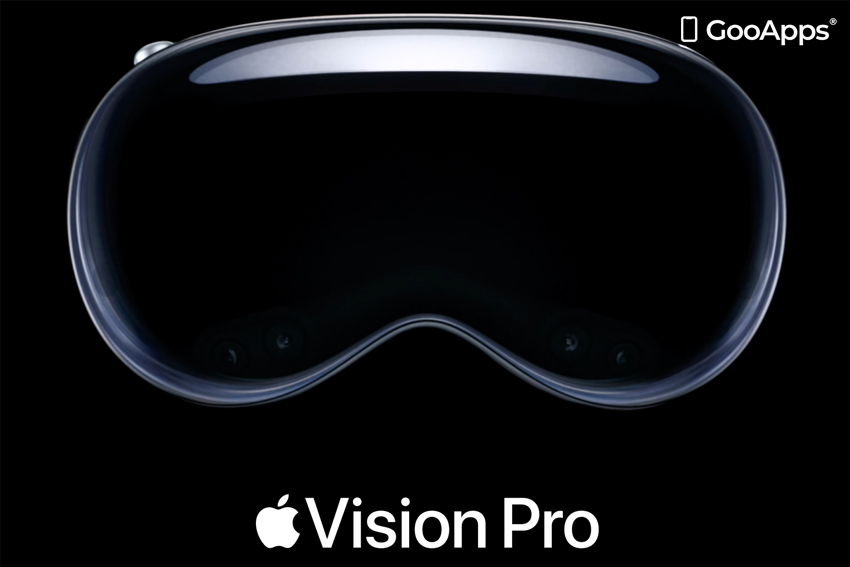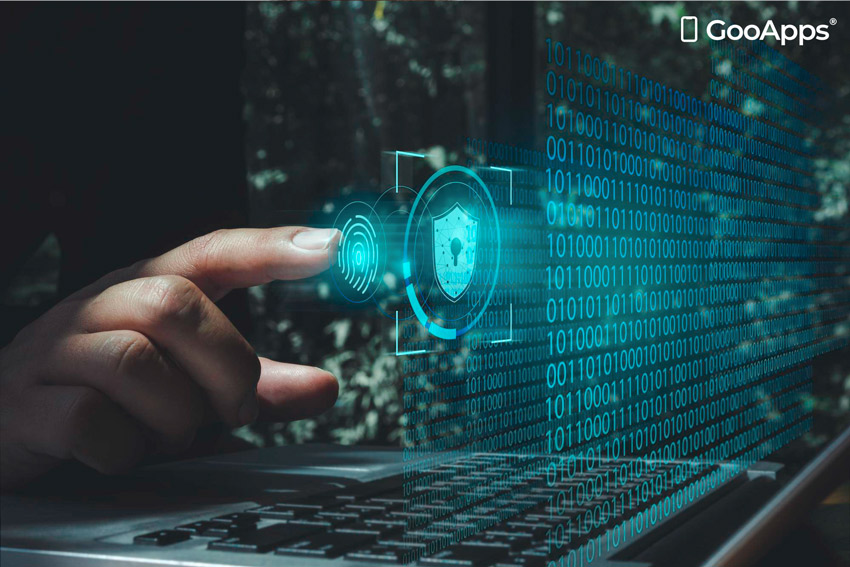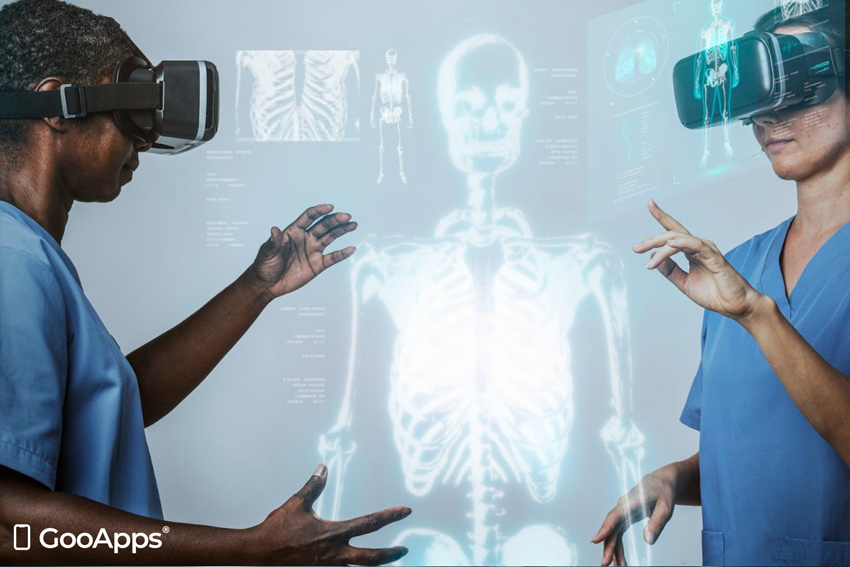
29/03/2024

The new Vision Pro goggles from Apple set a turning point in the field of mixed reality (a blend of both AR and VR), changing our conception of what is possible in this area. This new device tries to position itself as the beginning of the convergence of virtual and physical worlds. Equipped with the ability to immerse its users in digital experiences that interweave and enhance tangible reality, the Vision Pro promises new experiences with great potential.
But what is the real scope of this technology? Beyond entertainment and productivity, we find other notable applications in fields such as health, sport, and well-being. These areas, focused on improving the quality of life, could experience significant changes thanks to the capabilities of the Vision Pro. The question that arises, and which we will explore in this article, is how this technology could change these sectors, applying it to our lives for the better.

The Apple Vision Pro is a pioneering device in the terrain of mixed reality goggles, an innovation that tries to generate synergy between the digital world and the physical environment in a fluid manner. With this, the device seeks to facilitate an interaction with virtual elements, making it possible for the digital and real sapce to coexist harmoniously in our field of vision.
With cutting-edge technology, Apple introduces a high-definition viewing experience in a wide field of vision, allowing for deep immersion. The incorporation of eye tracking and gesture recognition aims to redefine interaction with this device, allowing users to navigate through menus, screens, and applications intuitively. In addition, the experience is meant to be enriched with spatial audio, seeking to take the user to a superior sound dimension, to complement the visual experience and generate total immersion.
Mixed reality emerges as a disruptive technology that sits on the spectrum between virtual reality (VR) and augmented reality (AR), inheriting and expanding the capabilities of both. Unlike virtual reality, which isolates us in a completely digital environment, and augmented reality, which overlays digital elements onto the real world without interacting with it, mixed reality creates a hybrid space where digital objects and the physical environment coexist and react to each other. This integration allows for deeper interactions, where users can manipulate virtual objects in their real space as if they were tangible, offering a unique experience.
This technology proposes a more intuitive and natural usage environment, where applications can interact with the user’s physical space, adapting to and responding to their context. Such capability invites innovation in various sectors, from education, enriching learning methods, medicine, improving surgical procedures and medical training, to commerce, enhancing the shopping experience through more dynamic processes.
The influence of mixed reality encourages developers and designers to consider the interaction between the user, the device, and the physical environment in an integrated manner. This approach seeks to redefine the functionality of applications, in addition to expanding creative and practical opportunities, with the potential to significantly alter how we use technology in our day-to-day life. Mixed reality represents a new chapter in the evolution of digital interactions.

The development of applications for the Apple Vision Pro is based on leveraging tools and platforms specifically designed to create mixed reality experiences. Developers can use Apple’s ARKit, which provides augmented reality capabilities, along with the APIs of the Vision Framework to integrate object recognition and classification into applications. It is essential to design and develop applications with a focus on usability and accessibility, ensuring they are intuitive and provide real value to the end user.
Next, we will see the list of tools currently available for developing apps.
RealityKit is an Apple framework specifically designed for the development of high-quality augmented and mixed reality experiences. Its integration into the development for visionOS, the operating system for the Vision Pro, offers tools for creating immersive 3D content, animations, and visual effects that naturally interact with the real world. Highlighted features include:
ARKit, another augmented reality framework from Apple, has been adapted to take advantage of the capabilities of the Vision Pro, allowing developers to understand and manipulate the user’s environment in innovative ways. Among its key functionalities for visionOS are:
Xcode is Apple’s integrated development environment (IDE), used for developing software for macOS, iOS, WatchOS, and tvOS, and now also supports development for visionOS. With Xcode, developers can use the visionOS SDK to access specific functions of the visionOS operating system, designed for the Apple Vision Pro. Key features include:
SwiftUI is a framework that provides a suite of tools for designing user interfaces across all Apple platforms, including visionOS. When working in conjunction with Xcode, SwiftUI offers:
Reality Composer Pro is a tool for creating 3D content, facilitating the import and organization of 3D assets, as well as their optimization for visionOS. Its features include:
Unity is a game engine and development platform that can be used to create mixed reality applications for visionOS. It provides a robust set of tools for:
Accessibility is an important consideration in development for visionOS, offering support for interaction through eyes, voice, or combinations of both. Developers should focus on creating accessible applications using the same techniques and tools already utilized on other Apple platforms.
For application development on visionOS, it is essential to stay updated with the latest technologies and best practices recommended by Apple. Likewise, the creation of immersive experiences that respect user privacy and protect their security in the digital environment should be prioritized. Equally important, ethical and user-centered principles should be adopted from conception through to launch to ensure applications that are innovative, responsible, and accessible.

When developing mixed reality applications, it is essential to proactively address user security and privacy, given the interactive and often personal nature of the data that is collected and processed. Regulations such as the GDPR (General Data Protection Regulation) in Europe, and the LOPD-GDD (Organic Law on Personal Data Protection and Guarantee of Digital Rights) in Spain, require developers to implement robust data protection measures, including explicit user consent for data collection, clear privacy policies, and data anonymization whenever possible.
Additionally, the Patient Autonomy Law emphasizes the importance of informed consent, especially relevant in health applications that use mixed reality. Therefore, when developing these applications, it is necessary to integrate security systems that guarantee the confidentiality and integrity of health information. Implementing end-to-end data encryption, conducting periodic risk assessments, and ensuring that the application architecture adheres to security and privacy principles by default are essential steps to protect users and comply with current regulations.

The launch of the Apple Vision Pro has opened new possibilities for the health sector, an area where innovation can have a direct and profound impact on people’s lives. The unique capabilities of this device allow for the development of innovative health applications, bringing a new dimension to telemedicine, rehabilitation processes, and education.
Its ability to combine the real world with interactive digital elements promises to improve diagnostic efficiency and doctor-patient communication, especially in virtual appointments. Professionals can use 3D models to explain conditions or procedures, facilitating a deeper understanding by the patient.
In rehabilitation, the Vision Pro opens the door to personalized therapies at home, where patients follow exercise programs specifically designed for their needs, always guided by virtual instructions. This technology seeks to promote a faster and more adapted recovery, in addition to minimizing the dependence on in-person visits to medical specialists.
Today, multiple apps are being developed for the health sector, applications that range from surgical planning and medical education to mental health and clinical productivity. Let’s see some examples.
The myMako app, developed by Stryker, exemplifies the potential of the Apple Vision Pro in surgery, allowing surgeons to visualize and review surgical plans in an immersive manner. This tool is designed to prepare for knee or hip replacement interventions, for example, offering a detailed visual experience that improves preparation and outcomes.
Boston Children’s Hospital has developed CyranoHealth for training in the management of medical devices such as infusion pumps, using an accessible and safe virtual environment. This immersive approach improves confidence and reduces anxiety for frontline workers, especially nurses, in managing new health technologies.
Furthermore, applications like Fundamental Surgery and CollaboratOR 3D by KARL STORZ offer advanced surgical training and enhanced learning opportunities through spatial computing, while Complete HeartX and Insight Heart allow for a detailed understanding of the human heart and its conditions through realistic experiences.
Siemens Healthineers has launched the Cinematic Reality app, which allows for visualizing interactive holograms of the human body in real environments, enhancing clinical training and education. This application leverages ray tracing technology and the M2 processor to create photorealistic representations of human anatomy.
Epic Systems introduces the Epic Spatial Computing Concept, allowing doctors and clinicians to manage electronic health records intuitively. This immersive approach promises to transform the interaction with health information, facilitating the review of labs, secure communication, and management of medical tasks through intuitive gestures.
Applications like Visage Ease VP and Falcon Vue enhance the visualization of medical images in collaborative spaces, improving patient care and optimizing processes like tumor reviews.
Cedars-Sinai has developed the Xaia app, which makes use of the unique capability of the Apple Vision Pro to offer mental health support through a trained digital avatar. The immersive therapy sessions offer deep breathing exercises and meditation in relaxing environments, reimagining behavioral support and wellness.
Other applications like Apple’s own Mindfulness app, as well as TRIPP, Healium, and Odio, transform the user’s environment into a soothing and enveloping experience, promoting relaxation and well-being through visualizations and spatial audio.
The inclusion of the Vision Pro in the world of sports and wellness aims to offer a new dimension in the way we approach physical training and the care of our mental and emotional health. Mixed reality, by merging digital elements with our real environment, opens up a range of possibilities for personalizing and enriching exercise routines and mental and emotional wellness routines, such as mindfulness or meditation.
In the sports realm, the Vision Pro aims to transform workouts, making them more adapted to individual needs. For example, in a training session where, in addition to following instructions from a virtual coach, users can see performance metrics in real-time overlaid in their field of vision, or even compete against digital avatars adjusted to their level of fitness.
The Fitness+ app, a collaboration between Apple and Nike, is expected to be updated to integrate new functionalities for the use of the Apple Vision Pro. This update aims to take full advantage of the device’s capabilities.
This technology has the potential to increase motivation and provide instant feedback on technique and performance, which is essential for improvement and injury prevention.
In the realm of wellness, Apple’s goggles offer the possibility of creating applications for meditation and guided relaxation. Through relaxing virtual environments and interactive breathing exercises, users can immerse themselves in mindfulness sessions designed to reduce stress and improve mental health. Customizable environments and guides adapted to the user’s emotional states can help create more effective and profound meditation experiences.
The evolution of the Apple Vision Pro heralds a promising future in the realm of mixed reality, initiating a shift in the way we interact with technology in our everyday, work, and entertainment environments. Future innovations are expected to further expand the capabilities of this device, integrating artificial intelligence technologies to offer even more immersive and personalized experiences. Health, sports, and wellness are sectors that will benefit significantly from these improvements.
The new device from Apple seeks to lead the transformation of these areas, offering tools that enhance performance and efficiency, promoting a comprehensive approach to overall well-being. Mixed reality promises to give us access to high-quality experiences, removing physical and geographical barriers, thus offering new ways of learning, treatment, and training that were unimaginable until now.

Complete the form and GooApps® will help you find the best solution for your organization. We will contact you very soon!